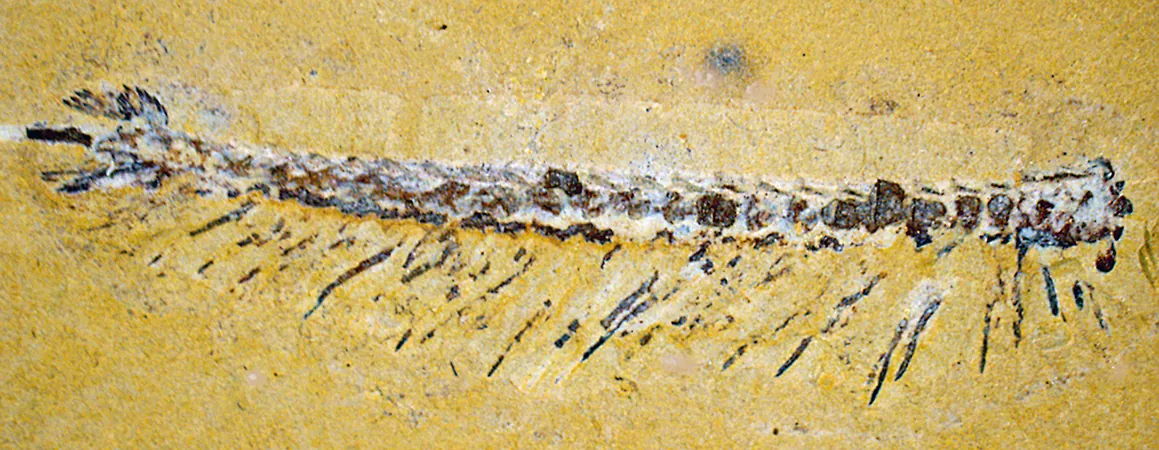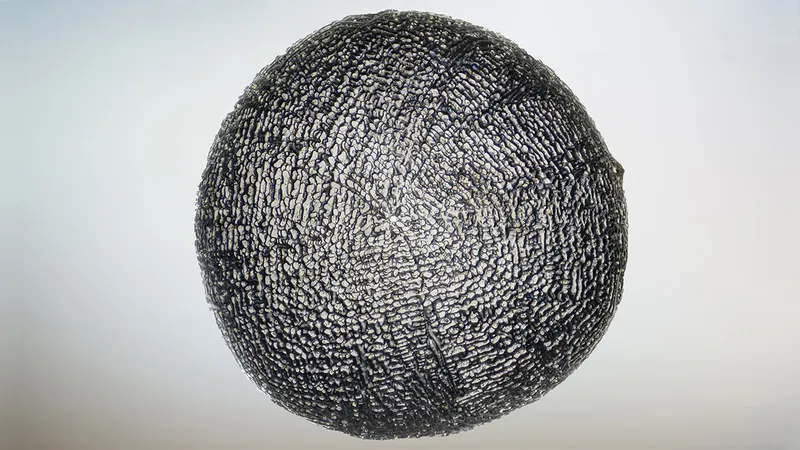
Unlocking the Secrets of Evolution: How Tiny Fossils are Transforming Our Understanding of Arthropods
2025-08-28
Author: Jia
A Fossil of Epic Proportions
An astonishing discovery has emerged from the depths of time—a fossilized sea creature that lived over 500 million years ago is shedding new light on the intricate evolution of arthropods, the most diverse group of animals on our planet. Recent findings published in *Nature Communications* unveil the crucial role this tiny fossil, known as Jianfengia multisegmentalis, plays in clarifying the evolutionary split between two major branches of arthropods.
Decoding the Arthropod Family Tree
The mystery of how arthropods, including insects and spiders, evolved has long been a puzzle for scientists. Researchers have long debated the division of the tree of life that separates mandibulates (which include insects, crustaceans, millipedes, and centipedes) from chelicerates (encompassing spiders, scorpions, and their relatives). Jianfengia's fossil analysis indicates it's a pivotal link in distinguishing early mandibulates from chelicerates.
A Game-Changing Discovery
Under the leadership of Regents Professor Nicholas Strausfeld from the University of Arizona, a team of scientists meticulously examined Jianfengia's fossilized brain. To their surprise, they concluded this ancient creature is rooted in the lineage of mandibulates, which overturns previous assumptions that it belonged to the chelicerates.
An Unexpected Twist in Classification
Traditionally, Jianfengia was classified within a group called megacheirans, known for their large grasping appendages. However, these appendages lack the typical antenna-like structures found in modern crustaceans and insects. Instead, they bear a resemblance to the pincers of today's horseshoe crabs.
Fossilized Insights into the Nervous System
The team's groundbreaking study revealed that Jianfengia and its ancient counterpart Alalcomenaeus had distinct neural structures, clarifying their positions in the arthropod family tree. Jianfengia's minute head, merely two millimeters wide, boasts features like compound eyes and specialized appendages for grabbing prey.
Revisiting Evolutionary Relationships
With the help of phylogenetic analysis, researcher David Andrew illustrated that Jianfengia sits close to the root of the mandibulate lineage, while Alalcomenaeus occupies a similar spot within the chelicerate branch. This research marks a significant step forward in our understanding of arthropod evolution, illustrating how different structures evolved from a common ancestor.


 Brasil (PT)
Brasil (PT)
 Canada (EN)
Canada (EN)
 Chile (ES)
Chile (ES)
 Česko (CS)
Česko (CS)
 대한민국 (KO)
대한민국 (KO)
 España (ES)
España (ES)
 France (FR)
France (FR)
 Hong Kong (EN)
Hong Kong (EN)
 Italia (IT)
Italia (IT)
 日本 (JA)
日本 (JA)
 Magyarország (HU)
Magyarország (HU)
 Norge (NO)
Norge (NO)
 Polska (PL)
Polska (PL)
 Schweiz (DE)
Schweiz (DE)
 Singapore (EN)
Singapore (EN)
 Sverige (SV)
Sverige (SV)
 Suomi (FI)
Suomi (FI)
 Türkiye (TR)
Türkiye (TR)
 الإمارات العربية المتحدة (AR)
الإمارات العربية المتحدة (AR)